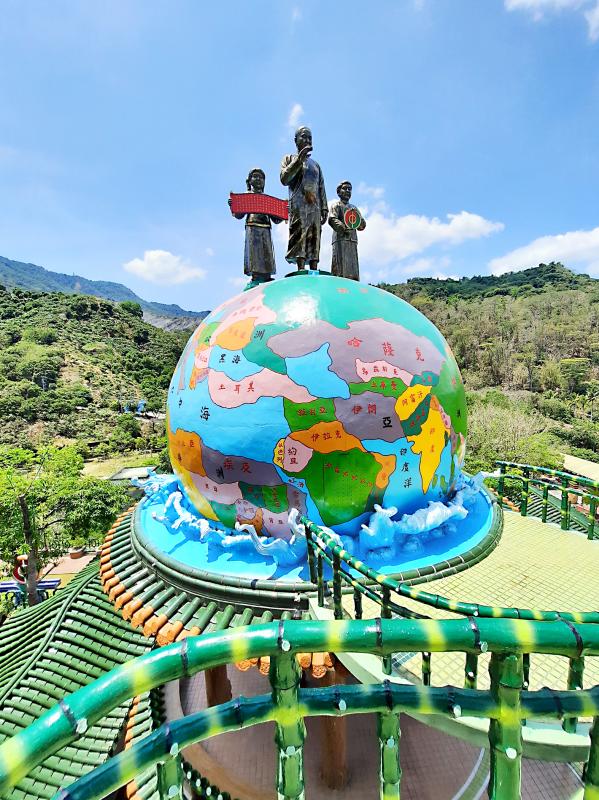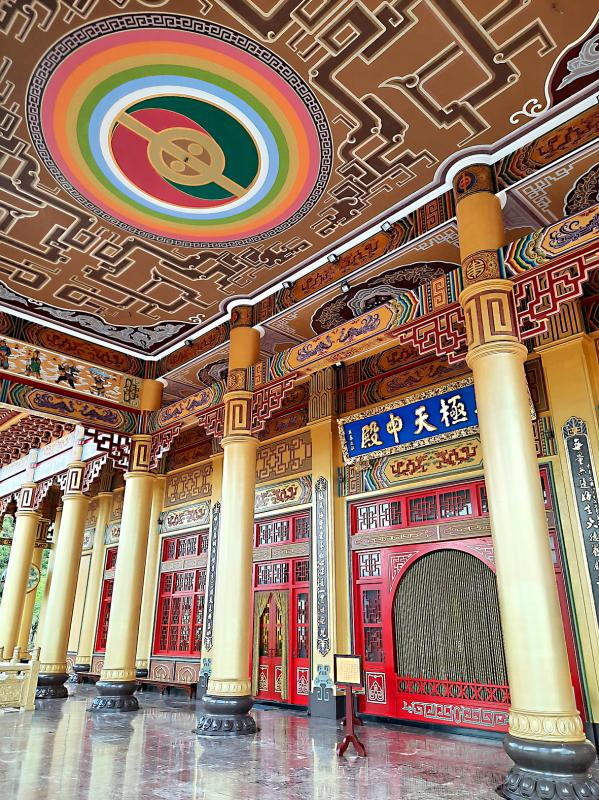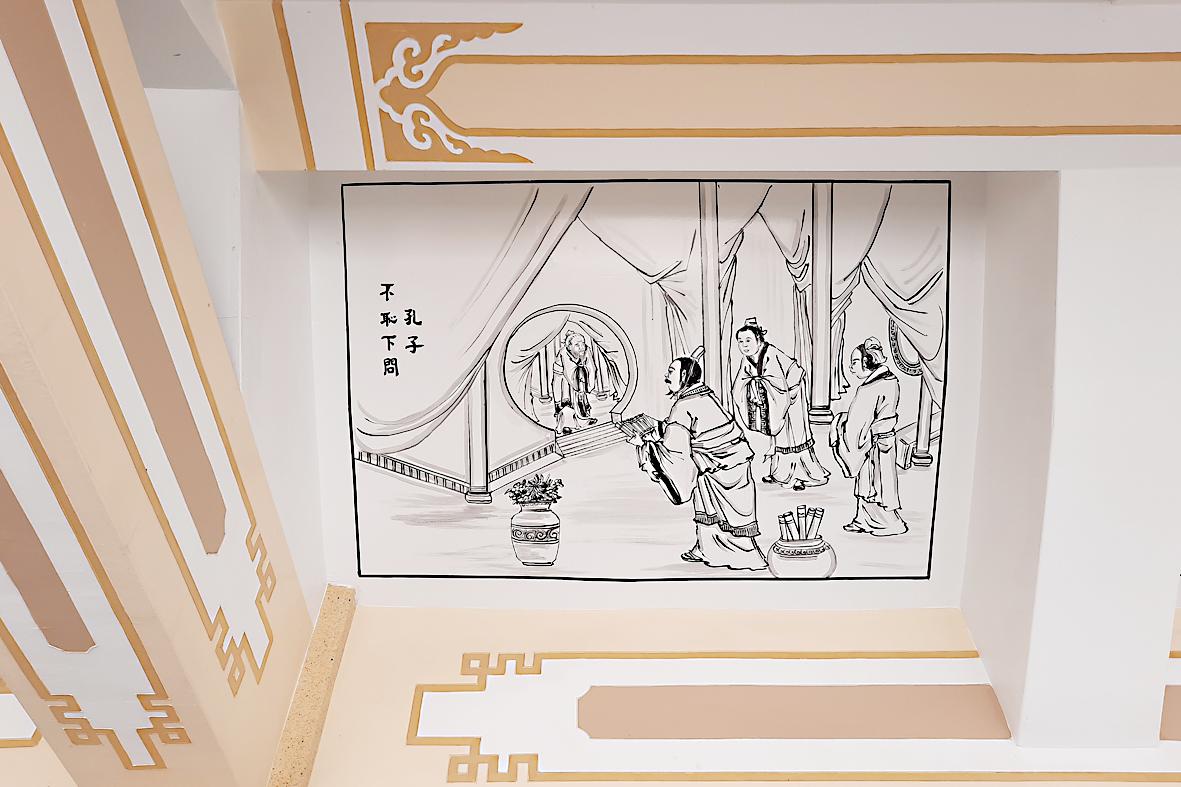Few countries can match Taiwan’s density of religions and religious buildings. Ancient faiths — including popular religion and Buddhism — remain dominant, but of newer creeds, I-Kuan Tao (一貫道) has had a greater impact than most. By some estimates, I-Kuan Tao now has more than a million followers in Taiwan; its supporters possibly outnumber Christians.
The name I-Kuan Tao (“the Unity Sect”) derives from a phrase in the Analects of Confucius which reflects the sect’s core belief that a single “way” pervades all of existence.
In a 1988 conference paper titled “Syncretism & Sectarian Behavior in Taiwan,” anthropologist David K Jordan shares some observations. Syncretism is the merging of different schools of thought, and Jordan recognizes it “as a resource in the rhetoric by which [I-Kuan Tao and some other] sectarian societies assert their superiority over competing, mainstream religious traditions... I have been told by sectarians that their sects are superior to [Buddhism, Taoism, Confucianism, Islam and Christianity] because the sects ‘incorporate all five of them’... the claim that the sect somehow incorporates all that is worthy in the constituent traditions is a pervasive and apparently persuasive one.”

Photo: Steven Crook
In other words, it promises a more perfect version of what long-established religions already offer.
Historians believe I-Kuan Tao emerged in the late 19th century in China. However, Jordan says believers claim it’s both “older than Buddhism, Taoism and Confucianism (and thus has greater historical legitimacy), and that it includes them, rendering their independent institutional forms unnecessary.”
More than 30 I-Kuan Tao organizations currently operate in Taiwan. Some exist as a result of schisms that followed the death in 1947 of sect patriarch Zhang Tian-ran (張天然). The religion’s tendency to divide into branches and sub-branches was exacerbated by government repression in post-war Taiwan. For decades, each local group operated independently to avoid official attention.

Photo: Steven Crook
The first I-Kuan Tao missionary in Taiwan may well have been Chen Wen-hsiang (陳文祥). Born in Kaohsiung in 1906, he trained as a doctor, and joined the sect in 1942 while working in China. At the end of 1945, he returned to Taiwan and began proselytizing.
Beginning in 1948 — by which time I-Kuan Tao had been proscribed by the Chinese Nationalist Party (KMT), which regarded it as a potentially subversive secret society — Chen was repeatedly arrested. One hagiographer writers that Chen was “severely beaten to the point where his teeth were broken, and he could only eat congee.”
Chen was forced to sign undertakings that he wouldn’t preach, but these “didn’t detract from his determination and courage to sacrifice for the ‘word.’”

Photo: Steven Crook
Chen played a key role in establishing the sect’s Baoguang division, which has two huge outposts in the foothills of south Taiwan.
I’ve been visiting Yushan Baoguang Temple (玉山寶光聖堂) for years, to admire the colorful art, and to show out-of-towners its astonishing depictions of Abrahamic religious figures. Even though it’s not much farther from my home, I didn’t get around to touring the other — Shenwei Tiantaishan Temple (神威天台山道場), said to be the largest I-Kuan Tao campus in Asia — until recently.
Yushan Baoguang Temple overlooks a village in Tainan’s Nanhua District (南化). It’s beside Provincial Highway 20, just west of Nanhua Reservoir (南化水庫). Learning that the first shrine here was completed in 1976 surprised me, as it wasn’t until 1987 that the authorities lifted the ban on I-Kuan Tao.
Returning earlier this month, I noticed that yet another building is being added to the hillside complex. Bypassing the subsidiary structures closer to the parking lot, I headed straight for the main hall.
I’ve been to countless Taiwanese temples, but I still find the Shrine of the Infinite Heavenly Mother (無極天母殿) deeply impressive. Named after the highest deity in the I-Kuan Tao pantheon, its exterior gleams with gold and red.
In the past, visitors could enter and take a closer look at the fantastic internal detail. I don’t know if there’s been a permanent change of policy, or if this is a temporary measure during the pandemic — there was no one around to ask — but this time around I had to make do with peeking between the curtain which stop pigeons and swallows from flying in.
Fortunately, there’s still a great deal to feast your eyes on. A podgy Maitreya Buddha sits in the center of the altar; behind him, an immense crayola-red, gold-framed tablet represents the Heavenly Mother. I couldn’t see all of the panel paintings near the ceiling, but the one which had shocked me on my first visit is clearly visible from the doorway.
One of the rectangular images high up on the left portrays Muhammad and his followers; all wear white robes and Saudi-style kufiya. There’s some text, including the Chinese character hui (回), an abbreviation for Islam. In other countries, visual depictions of Muhammad have aroused huge controversy.
Muhammad makes another appearance behind the Shrine of the Infinite Heavenly Mother, where a vast bas-relief covers the retaining wall. This striking work of art demonstrates how I-Kuan Tao is the apex of all religions. Finding Jesus among the crowd is easy enough and I quickly identified Guan Gong (關公), the Chinese deity of war and martial arts.
I can rely on Yushan Baoguang Temple to inspire feelings of surprise and delight. By contrast, wandering around the 310-hectare campus of Shenwei Tiantaishan Temple, the headquarters of I-Kuan Tao’s Baoguang Jiande (寶光建德) sub-branch, I felt nothing more than the sense of peace I’d expect in such a remote spot.
Approaching from Kaohsiung, I took Highway 28 into Liugui District (六龜區), then turned north on to Highway 27-Jia (27甲). Almost immediately, a sign pointing down a side road directed me to Shenwei Tiantaishan Temple.
The grounds contain Buddhist statuary, a small lake and oddities like slices of petrified tree trunk. After walking through the affiliated college, I came across what seemed to be the only shrine within the complex that keeps its doors open. The Maitreya Buddha occupies prime position; among the personalities depicted on the backdrop, I recognized the bald pate and mustache of Zhang Tian-ran.
The interior of the glittering-yet-bland main hall of worship wasn’t accessible, and I noticed that the side chambers had reflective privacy windows. The latter is in keeping with the sect’s erstwhile reputation for secrecy, and it reinforced the conclusion I drew as I left. If you can visit just one of these two I-Kuan Tao landmarks, it should be clear which one I think deserves your time.
Steven Crook has been writing about travel, culture, and business in Taiwan since 1996. He is the co-author of A Culinary History of Taipei: Beyond Pork and Ponlai, and author of Taiwan: The Bradt Travel Guide, the third edition of which has just been published.

A vaccine to fight dementia? It turns out there may already be one — shots that prevent painful shingles also appear to protect aging brains. A new study found shingles vaccination cut older adults’ risk of developing dementia over the next seven years by 20 percent. The research, published Wednesday in the journal Nature, is part of growing understanding about how many factors influence brain health as we age — and what we can do about it. “It’s a very robust finding,” said lead researcher Pascal Geldsetzer of Stanford University. And “women seem to benefit more,” important as they’re at higher risk of

Eric Finkelstein is a world record junkie. The American’s Guinness World Records include the largest flag mosaic made from table tennis balls, the longest table tennis serve and eating at the most Michelin-starred restaurants in 24 hours in New York. Many would probably share the opinion of Finkelstein’s sister when talking about his records: “You’re a lunatic.” But that’s not stopping him from his next big feat, and this time he is teaming up with his wife, Taiwanese native Jackie Cheng (鄭佳祺): visit and purchase a

April 7 to April 13 After spending over two years with the Republic of China (ROC) Army, A-Mei (阿美) boarded a ship in April 1947 bound for Taiwan. But instead of walking on board with his comrades, his roughly 5-tonne body was lifted using a cargo net. He wasn’t the only elephant; A-Lan (阿蘭) and A-Pei (阿沛) were also on board. The trio had been through hell since they’d been captured by the Japanese Army in Myanmar to transport supplies during World War II. The pachyderms were seized by the ROC New 1st Army’s 30th Division in January 1945, serving

The People’s Republic of China (PRC) last week offered us a glimpse of the violence it plans against Taiwan, with two days of blockade drills conducted around the nation and live-fire exercises not far away in the East China Sea. The PRC said it had practiced hitting “simulated targets of key ports and energy facilities.” Taiwan confirmed on Thursday that PRC Coast Guard ships were directed by the its Eastern Theater Command, meaning that they are assumed to be military assets in a confrontation. Because of this, the number of assets available to the PRC navy is far, far bigger